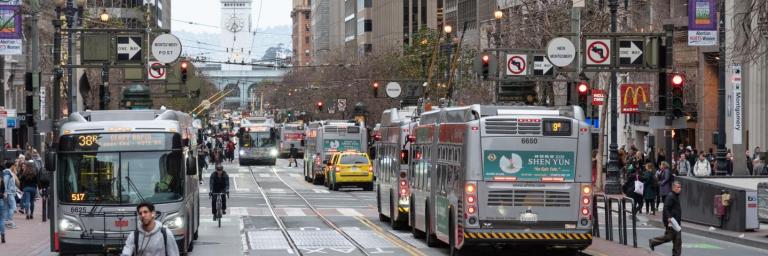Before the SFMTA invests in bike lanes, upgrades its transit fleet or makes accessibility improvements, each project goes through a comprehensive capital planning process. This process starts with defining the SFMTA’s potential investments first by how they may support the Agency’s Strategic Plan values so that the SFMTA can make well-informed decisions when prioritizing future investments. That decision-making process starts with the SFMTA 20-Year Unconstrained Capital Plan.
Updated every two years, the 20-Year Unconstrained Capital Plan is a comprehensive, financially unconstrained list and assessment of the agency’s potential capital needs to help achieve the SFMTA’s Strategic Plan goals over the next 20 years. The Capital Plan also provides the foundation for developing the fiscally constrained 5-year Capital Improvement Program (CIP) and the 2-year Capital Budget. Moreover, it informs citywide and regional capital funding priorities for the City and County of San Francisco and the Bay Area. Together, these actions make up the inception phase of a capital project; the initial steps taken in the project implementation process.
Read the 2023 20-Year Unconstrained Capital Plan
The purpose of the Capital Plan is to:
- Identify long-range capital needs to provide a pathway to meet our strategic goals.
- Use as an advocacy tool for our long-range capital needs with regional, local and statewide partners.
- Summarize and forecast our long-range capital needs in one place to help coordinate the implementation of SFMTA plans, programs and strategies.
- Provide a comprehensive list of capital investment needs which can inform development of the 5-year CIP and Transportation 2050.
- Communicate our long-term capital needs comprehensively to create accountability and build trust with different stakeholders.
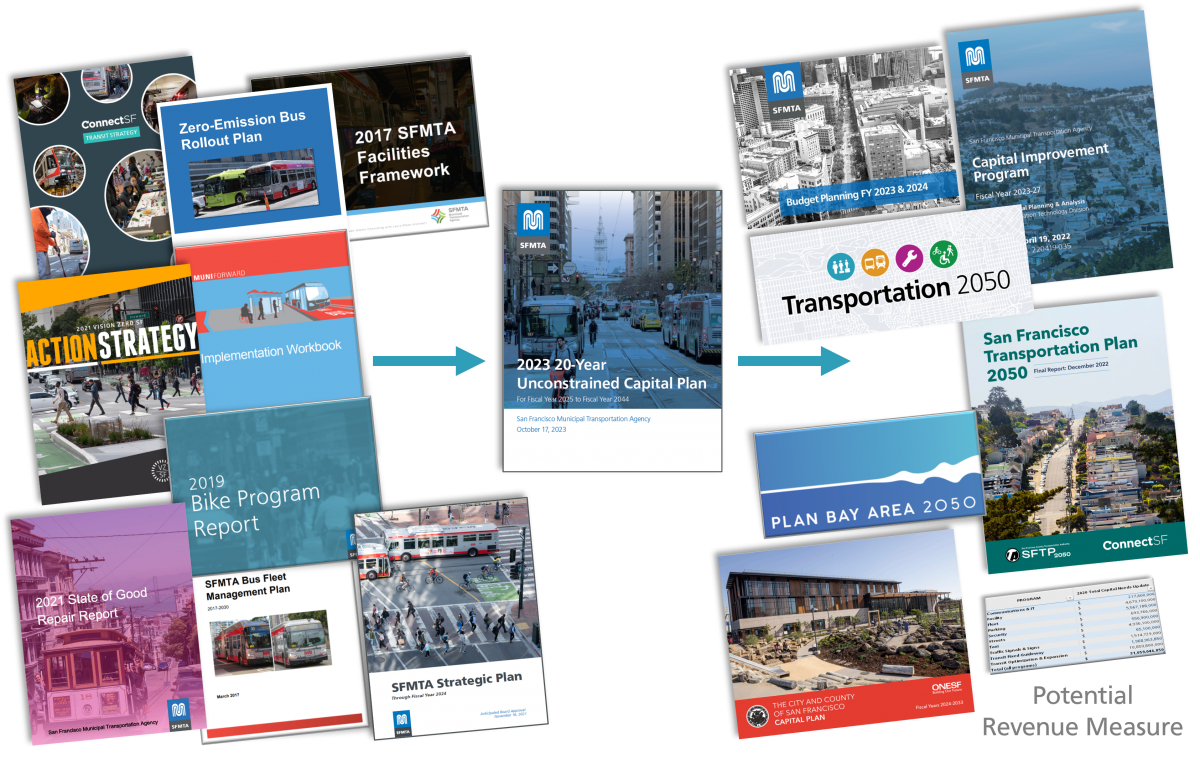
The Capital Plan helps the SFMTA coordinate the implementation of its plans, programs and strategies by looking at its long-range capital investments holistically. The Capital Plan coordinates the implementation of existing SFMTA and City plans, for example: ConnectSF, Vision Zero Action Plan, Muni Service Equity Strategy, Zero-Emission Bus Rollout Plan and the State of Good Repair Report. Then, once the Capital Plan gets approved, the SFMTA uses it to inform many funding-constrained plans and programs, touching upon capital projects, county and regional plans, funding revenue measures and the city-wide Capital Plan. Without the Capital Plan, the SFMTA would have to develop capital needs for each long-range plan individually. The Capital Plan allows the SFMTA to look at its long-range capital investments holistically, so that the SFMTA can make more data-driven, coordinated and effective capital planning decisions.
Capital Plan helps turn 20-year capital needs to 5-year capital projects.
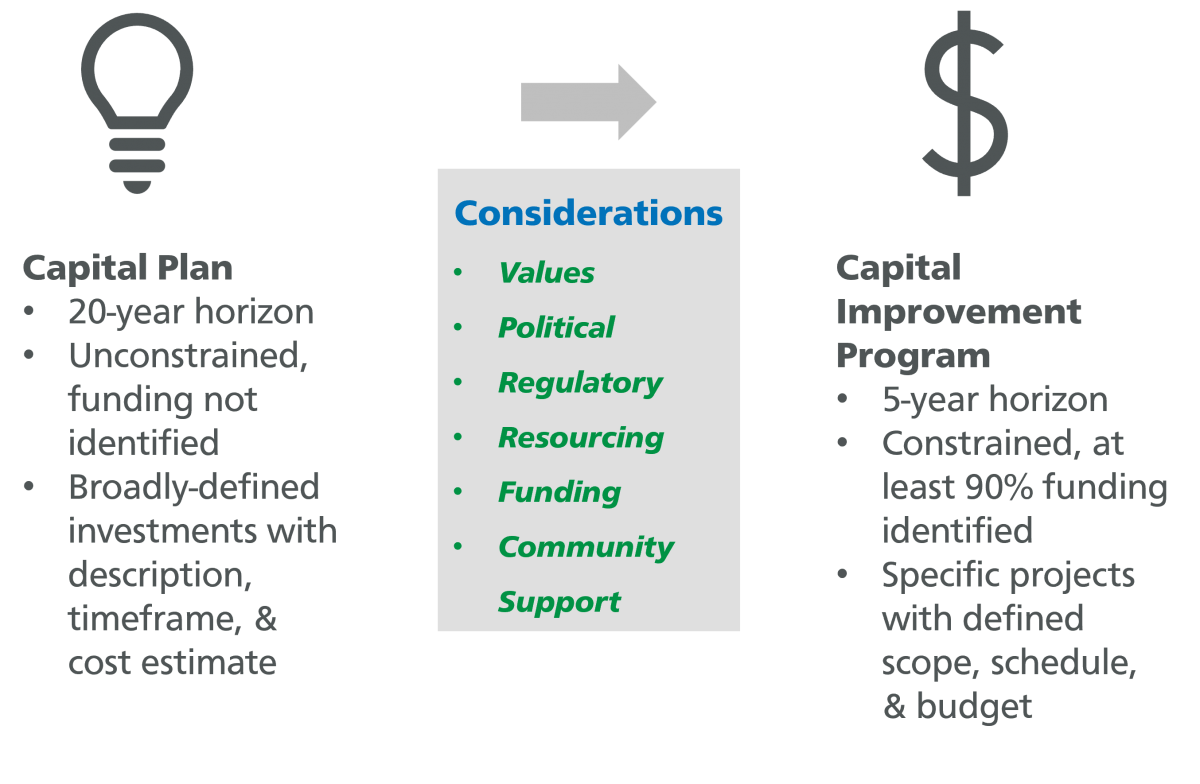
Capital Plan helps turn 20-year capital needs to 5-year capital projects by rooting the SFMTA’s capital investments first in its values. Whereas the Capital Plan includes all potential capital investments, referred to as capital needs, the 5-Year CIP identifies which projects are prioritized and have the resources to be initiated in the next five years, along with projected funding sources, budgets and schedules for those projects. Once included in the CIP, those investments will not be included in the next cycle of the Capital Plan.
Capital Plan informs our long-range funding forecast, Transportation 2050.
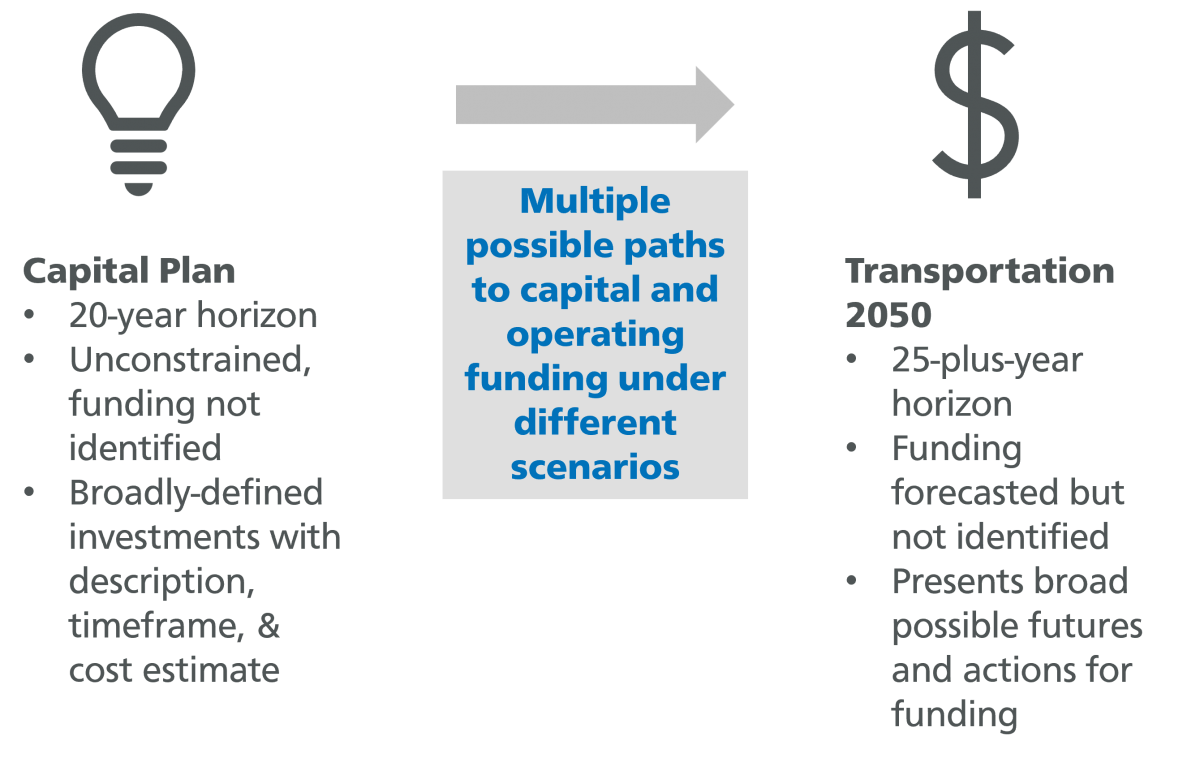
The Capital Plan also informs our long-range funding forecast called Transportation 2050. Transportation 2050 presents multiple possible paths to fund our capital needs under different scenarios. It has a 25+ year horizon. Funding is forecasted but not identified, as it’s primarily to look at the big-picture funding needs. It presents many possible futures and actions for how we fund our needs.
The Capital Planning Process
Overall, the Capital Plan is one piece of an iterative process rooted in the values outlined in the SFMTA Strategic Plan, such as equity, safety and climate action. These values guide capital planning decisions, including both critical needs intended to restore and enhance the existing transportation system and visionary needs intended to expand the transportation system. The graphic below outlines the capital planning process that guides how the SFMTA uses the Strategic Plan values to guide investments that lead to public benefits, a process that is supported by a number of long-range planning documents.
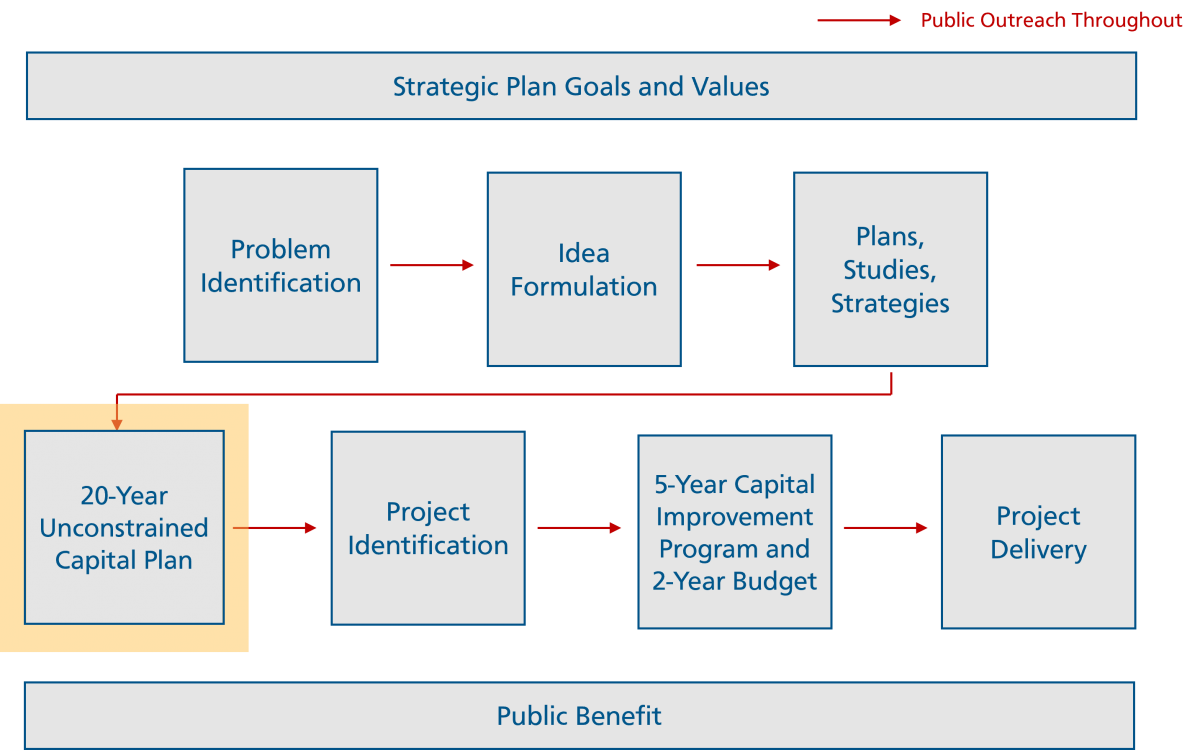
Planning ideas on how to improve the transportation system can come from requests from elected and appointed officials, community members and organizations, from staff through observed data and in response to legislation and regulations. These ideas form the basis for the needs and potential projects included in various plans, studies and strategies, which in turn inform the capital needs identified in the 20-Year Capital Plan. Through the agency’s values and political, regulatory, resourcing, funding and community support considerations, capital needs inform which projects are identified to be included in the fiscally constrained 5-Year Capital Improvement Program. The 20-Year Capital Plan and 5-Year Capital Improvement Program are key milestones in this process that are necessary to turn identified long-range capital needs into shorter-term capital projects that are delivered within a 5-Year horizon.
- Planning
